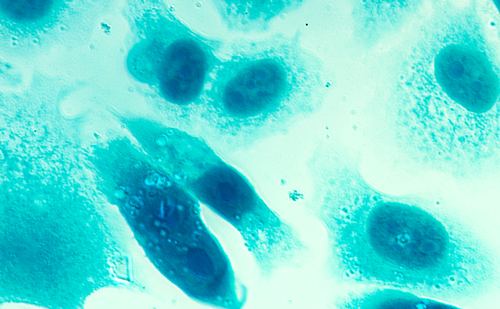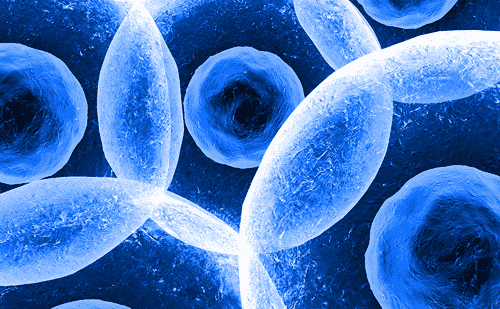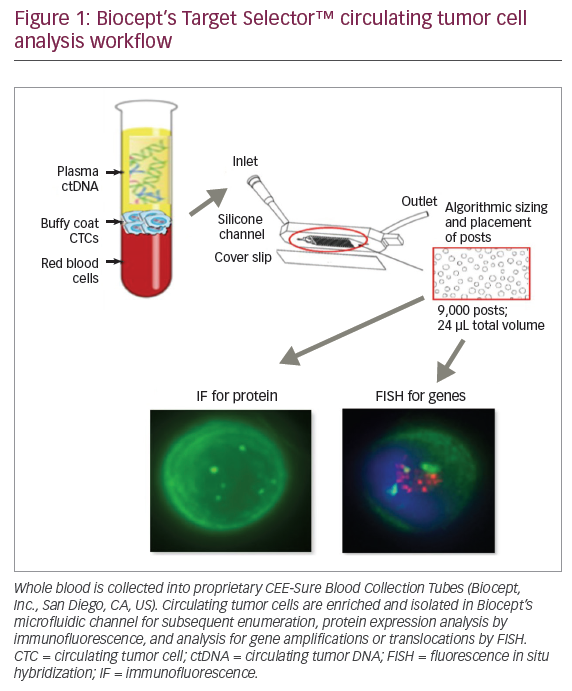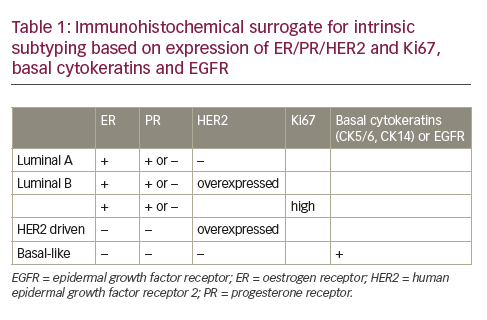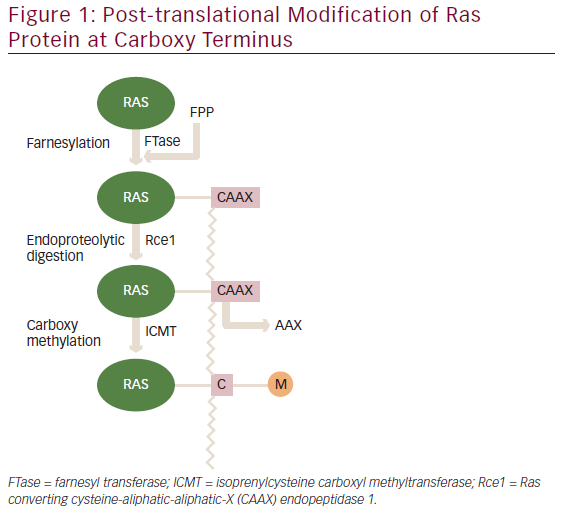Early cancer detection is known to improve clinical outcome. For screening purposes, it is possible to make a diagnosis of malignancy by cytological analysis, circumventing the need for an invasive procedure and tissue biopsy. Minimally invasive methods of harvesting cellular specimens from an anatomical site include direct sampling of surface cells by taking a smear or brushings. This simple approach forms the basis of population screening for cervical cancer, in which cervical smears are processed for cytological assessment with the Papanicolau (Pap) stain to determine both nuclear morphology and the extent of keratinocyte differentiation.1 At present, this represents an effective screening method for the detection of pre-malignant or early invasive lesions of the uterine cervix, for which prompt treatment intervention reduces disease mortality.
A major limitation of current approaches is that morphological examination of cytological specimens alone is subjective and prone to error. It is notoriously difficult to differentiate between normal cells and dysplastic cells that are at an early stage of malignant transformation. In cervical cancer screening, for example, the minimally invasive ‘smear test’ is subject to failure in detecting early pre-malignant lesions. In an attempt to eliminate this diagnostic uncertainty, we describe here a novel immuno-enhanced test based on the detection of minichromosome maintenance proteins (MCMs) in cytological specimens. This method shows tremendous potential in increasing the sensitivity and specificity of cytological diagnosis for screening programmes. Moreover, non-invasive approaches using the MCM immunodiagnostic test are promising for early cancer detection in a wide range of primary tissue sites for which screening programmes do not yet exist.
Minichromosome Maintenance Proteins – Biomarkers of Dysplastic and Cancer Cells for Cancer Screening
The range of complex cellular pathways that play a role in the formation of a cancer cell is immense. The transformation of a normal cell to a cancer cell involves an extraordinary range of intricate molecular and genetic changes, as well as the activation of different signalling cascades during the multistep process of carcinogenesis. One convergence point of these multiple redundant pathways is the initiation of DNA replication. Proteins involved in this normal physiological process are also essential for driving active proliferation in the cancer cell. From archaebacteria and yeasts to human cells, MCMs are one group of highly conserved proteins that are integral to the control of DNA replication in regulating the firing of replication origins during the cell cycle.2 Interestingly, we observed that, although present throughout the cell cycle, MCMs and related DNA replication proteins are degraded in quiescent and differentiated human cells.3 We predicted that, in the evolution of the cancer cell, replication proteins including MCMs would be a critical requirement from a very early stage in the process of malignant transformation, and in turn serve as accurate biomarkers for cancer diagnosis.
MCM proteins (MCMs 2–7) are abundant in all cycling human cells, forming ring-shaped heterohexameric complexes that may function as replicative helicases during the synthesis (S) phase.4 Upon cell-cycle exit, MCMs are no longer required, so they are downregulated and absent in quiescent, differentiated or senescent cell states. Most cells in the human body are not cycling and exist in a state of quiescence or terminal differentiation (in G0 phase), so MCM immunolabelling is restricted to a minority of cycling cells (in phases G1, S or G2 or mitosis of the cell cycle) located at specific tissue sites, such as epithelia and bone marrow. Consequently, it is possible to precisely identify populations of cycling cells in human tissue sections using antibodies specifically raised against MCM proteins. This is exemplified by immunohistochemical staining of normal stratified epithelium of the ectocervix with MCM antibodies (see Figure 1).2 Cells in cycle are confined to the basal proliferative layers of normal cervical epithelium and stain positively for MCMs, whereas superficial keratinocytes are MCM-negative, having exited the cell cycle and undergone terminal differentiation (see Figure 1a). In contrast, there is a striking difference in MCM immunolabelling in pre-malignant lesions, where the proliferating cellular compartment is expanded and extends to the epithelial surface (see Figures 1b and 1c). In squamous intra-epithelial lesions of the cervix, MCM-labelled cells are present in the more superficial layers of abnormal epithelium. We have exploited this dramatic change in the MCM status of surface epithelial cells for cancer screening purposes. Through MCM immunocytochemistry, the cervical smear test can be immuno-enhanced to accurately distinguish between normal MCM-negative surface cells harvested from normal cervical epithelium and MCM-positive dysplastic and malignant cells that remain in cycle (see Figures 1d and 1e). The Pap counterstain is retained to allow morphological features of the immunopositive cells to be examined.
Cervical cancer is an even greater burden in countries that cannot afford a screening programme. Limitations of the use of the conventional smear test in these countries are numerous, but one major factor is the requirement of training and keeping specialist cytopathologists to interpret the Pap test. As a result, population screening in resource-poor countries is generally restricted to specialist institutes and remains unavailable to the majority of the population.
However, the MCM immuno-enhanced cervical smear test is potentially applicable in these centres. The main advantage of the MCM test over the Pap test is that highly trained operators are not required for the identification of abnormal smears, which can be interpreted quickly, more easily and with excellent interobserver agreement. We recently tested this principle in a clinical evaluation study in Bangalore, India, where the MCM immunodiagnostic test was considerably more sensitive than the Pap test in detecting premalignant lesions from 455 cervical smears, confirming the test’s strong value in screening for cervical cancer in this setting.5
Minichromosome Maintenance Proteins and Non-invasive Methods of Cancer Screening
Dysregulated expression of MCMs is also characteristic of dysplasia and malignancy in a range of other anatomical sites, including breast,6 lung,7,8 colorectal,9 oesophageal,10 prostate,11 ovarian,12 laryngeal,13 oral,14 urothelial15 and vulval16 epithelium. For some of these sites, namely the aerodigestive and genito-urinary tracts, non-invasive methods of cancer screening are possible through the examination of exfoliated cells present in bodily fluids.17 In colorectal cancer, for example, cytological preparations can be made from stool specimens, and the MCM immunodiagnostic test also facilitates detection of pre-malignant or malignant cells using this method. Although the yield of colonocyte retrieval from stool samples can be low, an initial evaluation study has shown that MCM-positive colonocytes could be retrieved from the stool samples of 37 out of 40 patients with established colorectal cancer prior to their definitive management by surgery.18 Most interestingly, all of 25 control participants in this study shed only MCM-negative colonocytes in the stool.
Identification of neoplastic cells using antibodies against MCMs can also be applied in population screening for early detection of cancer at a range of other body sites from exfoliated cells obtained for screening purposes, such as urine samples for bladder cancer and sputum samples for lung cancer. Technically, it is also possible to automate detection of MCMs in situ using high-throughput microscopy of such samples or in lysed specimens using a liquid-phase immunoassay.
Conclusions
In recent years, relatively few advances have been made in improving existing cancer screening methods, in contrast to the continuous development of new anticancer agents entering clinical practice. For many cancer types, the reason why screening programmes cannot be developed quickly is that the important precursor lesions have not yet been clearly defined. Therefore, there is an urgent need to improve our understanding of the pathogenesis of cancer for each primary site.
New insights into the biological mechanisms that are critical in the formation of the cancer cell will lead to the development of diagnostic biomarkers that can also be exploited as screening tools. In this respect, MCMs have been shown to be sensitive cell-cycle biomarkers for early cancer detection. It is not surprising that expression microarray analyses have independently identified the strength of these proteins for this specific application.19
Other proteins that regulate the initiation of DNA replication are also of translational importance and may complement MCM staining in predicting clinical behaviour.6 For example, geminin is a regulator of MCMs in human cells that identifies actively proliferating cancer cells in S, G2 and early mitotic phases of the cell cycle,20,21 and a high geminin labelling index is associated with poor survival and the development of distant metastases in patients with invasive breast cancer.22,23 Replication proteins may also prove to be of value as strong biomarkers that predict response to treatments such as radiotherapy.24
Targeting factors required for the initiation of DNA replication is another exciting area of research that may yield highly effective anticancer therapeutic agents in the future. ■
My Learning
Login
Sign Up FREE
Register Register
Login
Trending Topic

12 mins
Trending Topic
Developed by Touch
Mark CompleteCompleted
BookmarkBookmarked
Allan A Lima Pereira, Gabriel Lenz, Tiago Biachi de Castria
NEW
Despite being considered a rare type of malignancy, constituting only 3% of all gastrointestinal cancers, the incidence of biliary tract cancers (BTCs) has been increasing worldwide in recent years, with about 20,000 new cases annually only in the USA.1–3 These cancers arise from the biliary epithelium of the small ducts in the periphery of the liver […]
touchREVIEWS in Oncology & Haematology. 2025;21(1):Online ahead of journal publication



